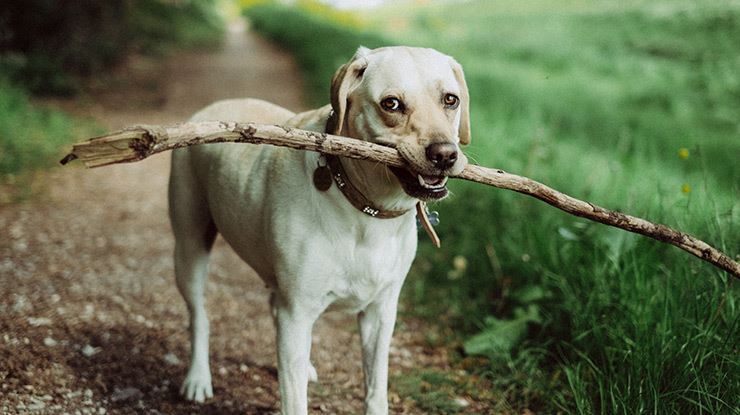
Dog Behaviors and Their Meanings
How many times have you wished that your favorite pooch could talk? Well, if you’re observant enough, you’ll realize that they’re actually communicating with you all the time!
Since they can’t speak, dogs tend to express their emotions through their actions. Thankfully, understanding a dog’s behavior is not rocket science. All you need is a little knowledge and some observational skills, and with that you may actually understand why your dog does what he does in certain situations.
Here is a brief look at a few common behavioral traits that can help you identify your dog’s moods:
Greeting
Dogs give the best greetings. Whether you are back from a quick walk, just returned from work, or you have just woken up—your dog will greet you with an unparalleled enthusiasm as though you have returned from a decade-long vacation! Usually, this greeting is accompanied with a stretch. Stretches are your dog’s way of saying hello to you. But remember, he would only greet someone this way if he knows them well enough. If you are a stranger and a dog does not think that you are a threat, then his way of greeting you would be something like bouncing up to you and resting his front paws on your body. Either way, this little warm greeting should make you feel more than welcome!
Sleepy
Yawning may indicate that a dog wants to go to sleep, but it can also be a sign of stress, anxiety, or underlying health issues. But a sleepy dog is not always a bad sign—sometimes it’s just in a dog’s nature. Some breeds and older dogs can even sleep as much as 18 hours a day!
Play
An active dog is an absolute delight. Watching the little ball of fur bouncing around makes you fall in love with him all over again. Dogs have a specific bark that is reserved to indicate that they are in the mood to play. This is called a play bark. Your dog will get frisky and his tail will not stop wagging! That’s a definite sign that your dog is up for some playful fun!
Threatened
This is a behavioral sign that could definitely help you identify a friendly dog from a not so friendly one. Threatened dogs mark their territory and spaces very clearly, cross the line and there will be consequences.
The fur at his neck, called hackles, will be standing and the dog may be poised in a defensive stance. This is a clear indication that the dog feels threatened and may attack. A dog may exhibit these signs towards another dog too, especially if he feels that the dog is trespassing on his territory.
Being Friendly
Dogs are as social as human beings; they just have different ways of showing it. Dogs have a loose and relaxed body language when they are friendly. Their bodies form gentle curves and they will roll around in circles with each other. Once again, a wagging tail is a positive sign. Once acquainted, they may even play around with the others in their own doggy way.
Angry
An angry dog will let out a low growl, which itself is a warning that he isn’t very happy. The front portion of his body may be stretched out in a pouncing position. He will bare his teeth and clearly let you know that he is annoyed. There will be no wagging of tail, instead, his entire body will be rigid and his tail will be tucked between his legs.
Curious
Yes, dogs get curious, too. Whether it’s a package that has just been delivered or a new neighbor dropping in to say hello, everything is scrutinized thoroughly by your pet. Your dog will not stop sniffing around and might actually circle the person or object. His tail may sway from side to side and his ears will likely be pricked up. If he is trying to assess the noise, his ears may also twitch with the disturbances in the sound.
Remember, as a responsible dog owner, it’s up to you to decipher these actions and the meanings behind them. With an understanding of these basic signs, you can be the next pet-whisperer—well, at least in one-way communication. You will be able to understand your dog much better, and, in return, your dog will be able to develop stronger trust in you. It’s a win-win!










